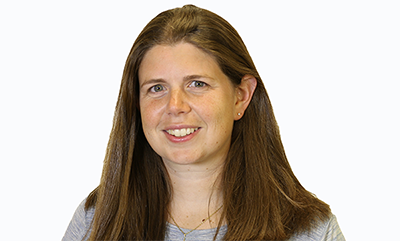Staff Spotlight: Emily Sisson.
Collaborative work is key to developing sustainable public health solutions and improving population health outcomes. This weekly series spotlights one SPH staff member who advances public health through collaborations within the field and across sectors.
 How did you come into your role at BEDAC?
How did you come into your role at BEDAC?
I have been a part of the BU community since 2001. I arrived on Charles River Campus as an undergrad with aspirations of being a high school math teacher. But after taking several classes through the biostats department, a new career path became clear. I have been at BEDAC for over 10 years. I started out as a statistical programmer and analyst, but now the scope of my responsibilities has expanded quite a bit. These days, I help to manage the data collection, storage, and analysis for 10-12 projects at any given time. I also supervise a staff of eight programmers and analysts.
What are the ways that you facilitate collaboration between BEDAC and any other SPH-affiliated units?
One of the most wonderful things about working at BEDAC is the opportunity to work on a wide variety of projects for the whole of the research life cycle. I have helped SPH, BUSM, and BMC investigators design data collection forms, build and test REDcap projects, provide reports to regulatory and funding agencies, perform statistical analyses, and draft manuscripts for publication. I also routinely train research staff on data collection procedures to ensure that their study’s data will be clean and analyzable. Every investigator and every project has different needs, and I really enjoy when my experience can help inform a new project’s course.
What are some of the projects or collaborations that you’re most proud of, and why do they stand out?
There have been so many—it’s difficult to choose! Collaborating with the CARE Unit in BMC’s Section of General Internal Medicine stands out, since I’ve been working with them since 2005. I am particularly proud of our work on the LINC Study—a randomized control trial that sought to coordinate narcology and HIV treatment systems of care in St. Petersburg, Russia. Under the guidance of Debbie Cheng, I worked on the primary analyses for the trial and we found that the strengths-based case management intervention was more effective than the standard of care in linking people to HIV care. It is always gratifying when the results show that your work is making a positive impact on people’s health.
What’s the best thing about what you do?
Despite moving into a more supervisory role, I am, and always will be, a programmer at heart. I am always looking for a coding challenge and truly enjoy trying to find a better, more efficient way to do a task.
But, honestly, the best thing about my job is, hands down, my colleagues. I have learned so much from every single person at BEDAC and I am regularly amazed by the level of dedication , enthusiasm, and compassion each person brings to the table every single day. It is a real pleasure to work with such a great group in a collaborative, supportive environment!
“Emily is a natural leader. She is approachable, extremely knowledgeable and very confident. She is able to digest a lot of information quickly and take all perspectives into consideration. She is fair, considerate and above all kind. I love working with Emily, we all do… we are so fortunate that she is part of the BEDAC team.”
Kimberley Dukes, executive director of BEDAC and a research associate professor of biostatistics